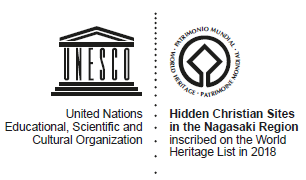Catholicism was first introduced to Japan by a Jesuit priest, Francis Xavier, in 1549. It spread nationwide due to the evangelising activities of the Jesuits who came to Japan after Xavier, and also due to the protection afforded by baptised feudal lords (
Kirishitan Daimyo) who sought to profit from overseas trade. However, the ban on Christianity, which had begun with an edict issued by Toyotomi Hideyoshi expelling the missionaries, was tightened under the Tokugawa Shogunate, by which all the churches were destroyed and all the missionaries were ordered to leave Japan. In 1637, during the nationwide ban on Christianity, remaining Catholics took up arms against the tyranny of their local lord and were besieged in
Hara Castle. The Shogunate was shocked at this Shimabara-Amakusa Rebellion and adopted its national seclusion policy (known as
Sakoku) to prohibit the arrival of Portuguese ships that could be used to smuggle missionaries into Japan. After the last missionary within Japan had been martyred in 1644, the remaining Japanese Catholics could only maintain their faith and communities on their own in secret. These believers are referred to as Hidden Christians. Many such communities disintegrated in rapid succession in the latter half of the 17
th century due to a series of large-scale crackdowns on remaining Catholics, forcing them to either renounce their religious faith or be martyred.


 (Ⅰ) Beginning of the absence of missionaries and hiding of Christians
(Ⅱ) Hidden Christians' endeavours to continue their religious faith
(Ⅲ) Hidden Christians' endeavours to maintain their religious communities
(Ⅳ) The transitional phase triggered by contact with missionaries, leading to the end of Hidden Christians' hiding
(Ⅰ) Beginning of the absence of missionaries and hiding of Christians
(Ⅱ) Hidden Christians' endeavours to continue their religious faith
(Ⅲ) Hidden Christians' endeavours to maintain their religious communities
(Ⅳ) The transitional phase triggered by contact with missionaries, leading to the end of Hidden Christians' hiding


































